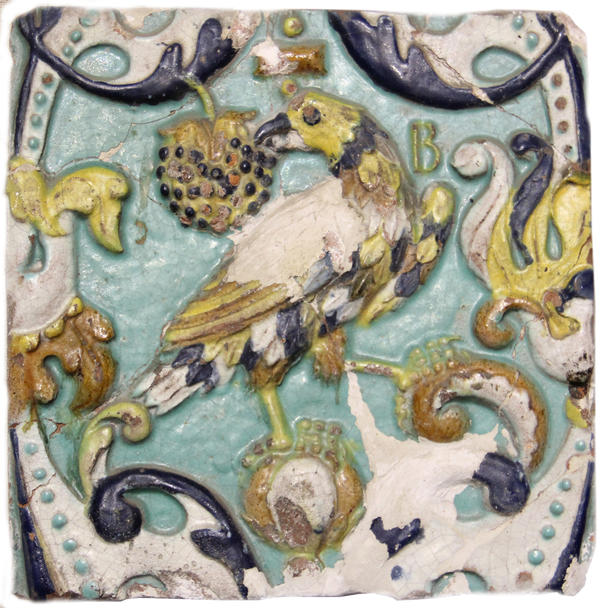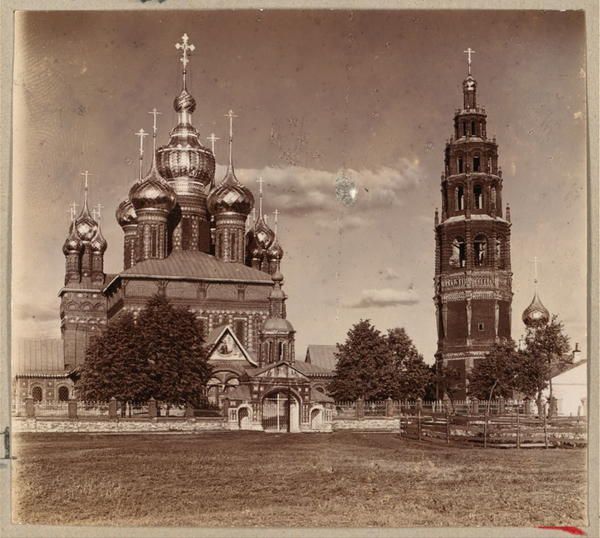The collection of the Children’s Art Gallery contains tiles of the 17th century, elements of a panel of fired ceramic tiles that once adorned the facades of buildings, internal walls and stoves. This exhibit is one of the five that belonged to Yaroslavl temples and churches. In the 1970’s, it was acquired by ceramic artist Valentina Sveshnikova who then donated it to the museum in 2016.
Glazed tile
Creation period
1671 to 1687
Dimensions
22,5x22 cm
Technique
Red clay. Enamels of four colors and brownish glazing
Exhibition
2
Open in app#1
Glazed tile
#8
#4
The first glazed tiles were only embossed, but over time, they started to make the front side smooth and flat as well. The shape of the tiles resembles an open box. On the back side the tiles have a rump, a small ledge that is used to fix the product in the wall or furnace masonry. The tiles were cast into ready molds, and the rump was made on a potter’s wheel. The finished product was then fired in a furnace.
#3
The exhibition couple of glazed tiles
#9
The exhibition couple of glazed tiles were made in 1671 to 1687. These are multi-color painted samples produced in Yaroslavl from red burnt clay; they once adorned the Church of St. John the Baptist in Tolchkovo.
#10
The tiles are coated with enamels of four colors: azure, blue, pink and yellow. The enamel, in turn, is coated by brownish glazing which is usually used for pottery. The front side of the tiles depicts two birds surrounded by a plant-and-berry ornament. The museum tiles did not have a rump; instead, the items were planted on a gypsum base. The number 1976 on the base probably indicates the year when the tiles were removed from the facade of the church.
#5
Church of St. John the Precursor in Tolchkovo
#6
The construction of the Church of St. John the Precursor in the 17th century was financed by parishioners. For the church, about 40 types of figured bricks were used. To produce those bricks, two brick factories were specially built in Yaroslavl. The temple has two five-headed altars (side aisles); the central part of the church also has five heads. If you look at the church from the east, you can see all 15 domes. A separate 45-meter bell tower was erected later, only by 1690.
#11
In 1694 and 1695, the temple was decorated by 16 painters from Yaroslavl. The team was headed by famous Pereslavl icon painter Dmitry Plekhanov.
#12
The temple has survived to this day. It is included in the list of Yaroslavl architectural monuments and objects of cultural heritage of federal significance. Images of the Church of St. John the Precursor are printed on the banknote of 1000 rubles.
#13
An example of the use of tiles in the external decor of the temple framed by several types of figured bricks
read morehide
00:00
00:00
1x
Glazed tile
Creation period
1671 to 1687
Dimensions
22,5x22 cm
Technique
Red clay. Enamels of four colors and brownish glazing
Exhibition
2
Open in app
Share




